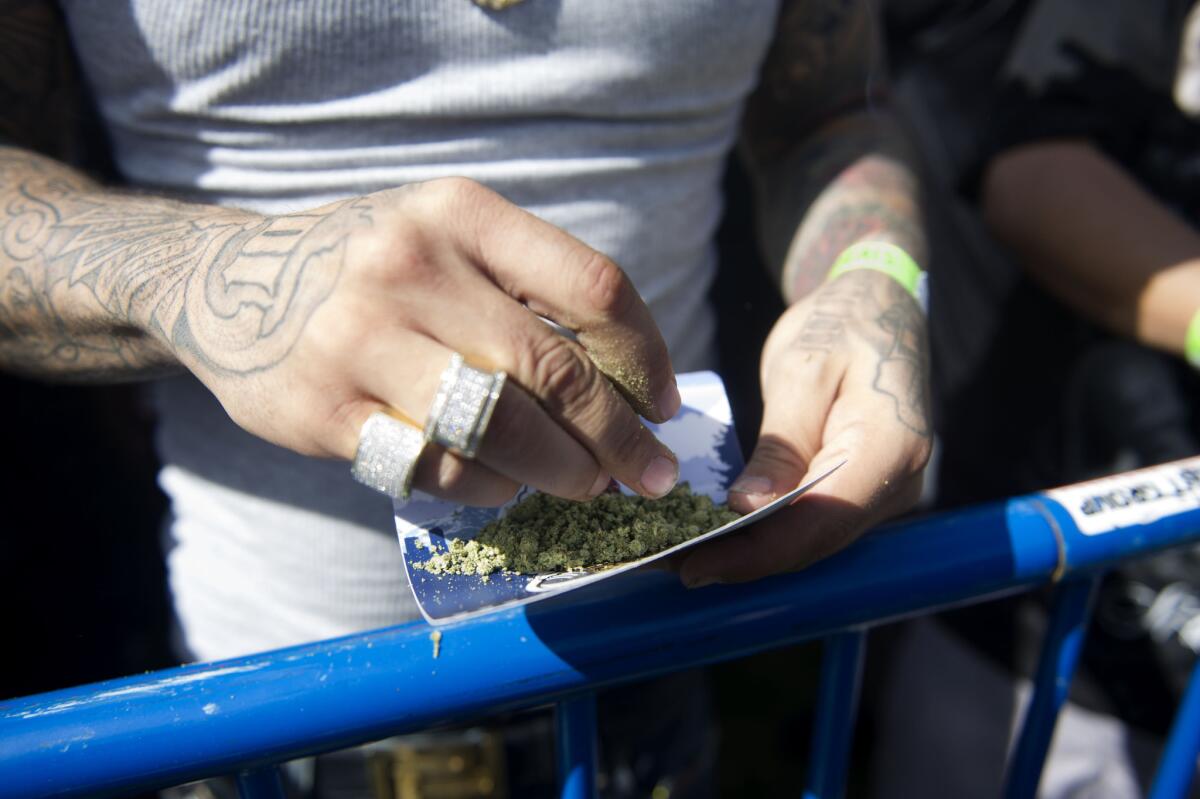Pot opponents question validity of Colorado study

- Share via
When Colorado legalized marijuana for recreational use in 2012, opponents of the new law warned that more teenagers would start using the drug.
But teen use of marijuana has held steady, according to a new survey of nearly 17,000 high school and middle school students by the state department of public health and environment.
The study, released this week, also found that “Colorado does not significantly differ from the national average in lifetime or current marijuana use.”
Colorado, which has some of the most liberal marijuana laws in the country, is something of a test case for legalization, as 25 states now allow medical or recreational use of the drug to varying degrees. Legalization advocates have seized on the findings to bolster their position.
“I think it will result in even more people coming to agree it’s time to end marijuana prohibition,” said Mason Tvert, a spokesman for the Marijuana Policy Project in Denver.
But critics argued that the sample may be biased, because just under half of the students selected for the survey chose to participate in it. Students who didn’t respond may be most likely to use the drug, the critics said.
“That’s really in the area where I have concerns about reliability,” said David Murray, a senior fellow at the Hudson Institute and former chief scientist at the White House Office of National Drug Control Policy.
That the survey was conducted in schools was in itself problematic, he said, because heavy marijuana users tend to skip school or drop out. “This is really troubling that you may be missing the most at-risk kids, systematically,” Murray said.
To study is based on data collected in the 2015 Healthy Kids Colorado Survey, which examines nutrition, mental health and other issues in a randomly selected sample of students statewide.
Among high school students answering the survey, 21% said they had used marijuana in the last 30 days, and 38% reported having used it at least once at some point. For junior high students, those figures were 4% and 8%
Those results were not statistically different from data collected in 2013, the year before the recreational marijuana law took effect.
The rates were also on par with those from 2009, when medical marijuana dispensaries started opening in Colorado.
Leo Kattari, coordinator of the Healthy Kids Colorado Survey, defended the methodology and the results. “Of course, any researcher would love [a] higher participation rate,” he said. “But because of the large sample size, we’re confident it accurately represents the health of middle school and high school students.”
Dr. Sean Lenoue, a psychiatrist at the University of Colorado and opponent of marijuana legalization, pointed to what he considered the study’s most disturbing finding: Between 2013 and 2015, the number of teens who said that marijuana was risky fell from 54% to 48%, suggesting that its use was becoming more socially acceptable.
Risk of addiction, negative effects on brain development, exacerbation of mental health problems and risk of motor vehicle accidents are serious concerns, he said.
Critics also argued that statewide data are hiding increases in marijuana use among certain groups of teens.
In Denver, home to more marijuana dispensaries than anywhere else in the state, the number of 11th graders who said they used the drug in the last 30 days rose from 29% to 38% between 2013 and 2015.
Looking at just older high school students statewide, marijuana use also rose slightly.
More to Read
Sign up for Essential California
The most important California stories and recommendations in your inbox every morning.
You may occasionally receive promotional content from the Los Angeles Times.










